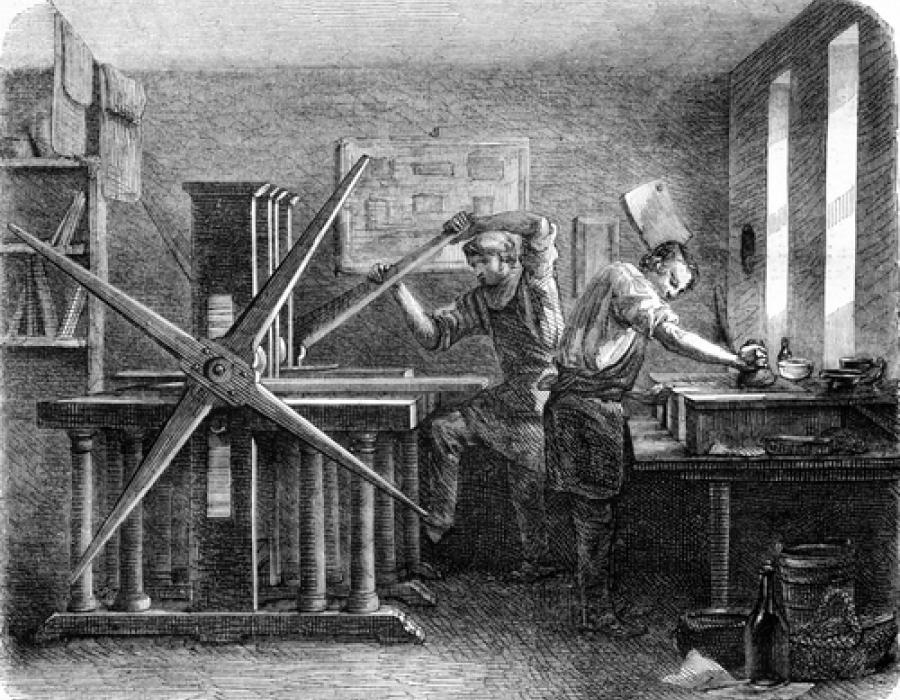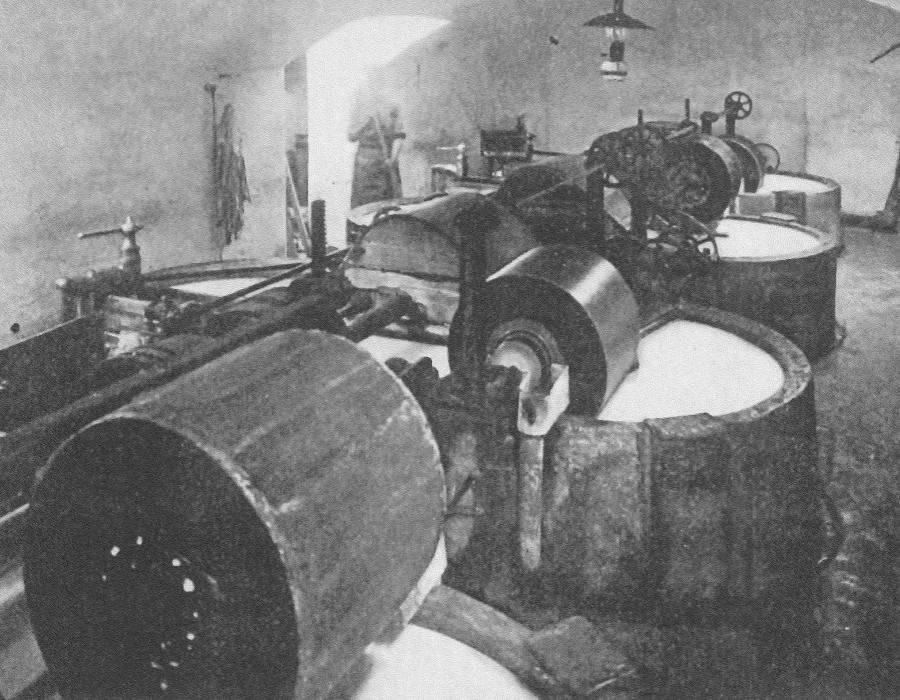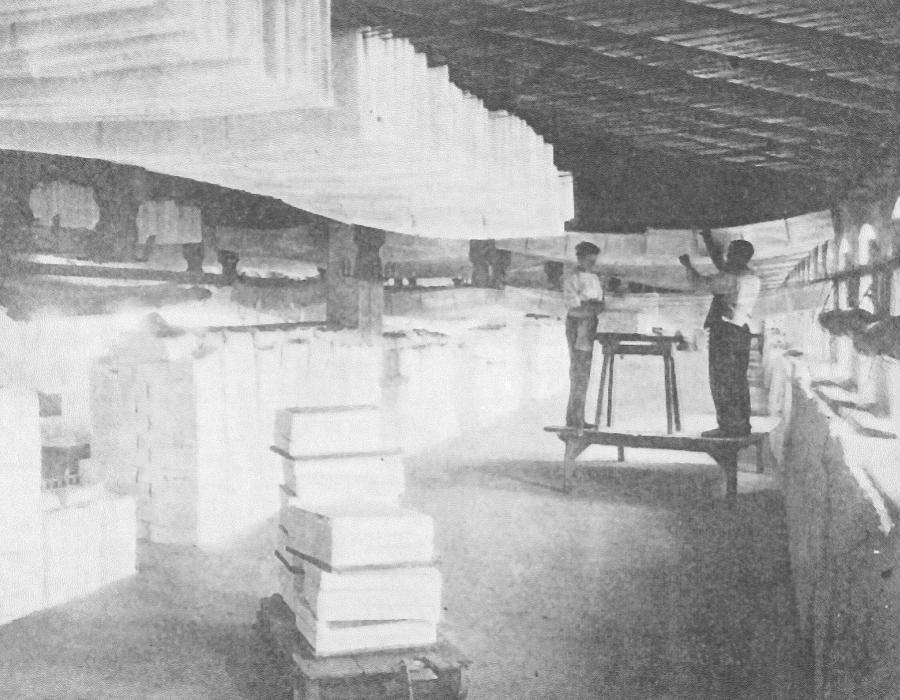In the previous post ( LINK) we revisited the history of paper from its early days as a successor to papyrus and parchment as a writing substrate until it began to be manufactured by paper mills and was eventually sold all over the world. However, in order to step up production and to be able to cater to a upwards-spiralling demand, technology evolved to ultimately invent something that would take paper production to a much more efficient level.

The art of typography and the printing press
Following the invention of the art of typography in 1440, which made it possible to obtain a large number of copies of texts of any length, the printing press heralded a genuine revolution. As ASPAPEL indicates, “it provided a true measure of the value and usefulness of paper, since besides its graphic qualities, it was abundant, inexpensive (it cost one tenth of what parchment did), long-lasting, transportable and affordable for the enormous amounts required by printers”.
This is how the paper and printing industry merged almost involuntarily, since they needed each other and fed off each other. In this way, paper mills spread rapidly across Europe towards the end of the 15th century. Moreover, paper ceased to be an item that was restricted to the few, and trading spread, leading it to ultimately become much more of a commodity.
In search of new raw materials
However, the increasing demand for paper to enable these new factories to print ran parallel to the need for more raw material to produce it, and cloths with optimal characteristics used for making it were no longer sufficient to produce the huge amounts of sheets demanded. Research was therefore conducted into possible new plant materials that could be used as the basis. This process uncovered the effectiveness of chlorine for achieving greater whiteness of the paper paste, allowing coloured textiles that could not previously be used for this purpose to be included in the manufacturing process.
Finally, after more than a century of searching, a material from which paper could be obtained and whose origin was viable was found: wood. Nevertheless, several years would elapse before the mechanical and chemical processes that facilitated the use of wood were obtained, more precisely in 1840 and 1850, respectively.

Arrival in America
Parallel to these tweaks to the production process, and as a result of Spain’s colonisation of Latin America, paper also reached that continent. In fact, it played a key role in the Hispanicization (Castilianization) of the colonies and in converting them to Christianity. Even so, the first paper mill was not set up in America until approximately 1575, in Culhuacán (Mexico), since until then the ownership of mills had been a Royal monopoly.
The golden age of Spanish paper-making
From the outset, Spain had become a stronghold for the increasingly more advanced production of paper in the West as a point of entry for this technique into the European continent. Nevertheless, the country’s golden age truly began in the 18th century, and more particularly in Catalonia. At that time, the Crown enacted a set of decrees to promote the manufacture of paper and deregulated its exportation towards the Indies.
Following a tour of Spain by master paper-manufacturers from Genoa, ultimately leading to improved production techniques, Philip V created the Real Fábrica de Papel in Madrid, and the country’s paper mills achieved great relevance in Europe, although these small facilities were slowly but surely replaced by larger paper-making plants. However, the French invasion curtailed this golden age.

Towards more efficient manufacture
Paper mills were always located on river banks to leverage the power of running water so that they could be operated by means of hydraulic energy. In the 17th century, the Dutch began to investigate another way of obtaining a source of power for these mills: wind energy. They also pioneered the introduction of the Hollander beater into the paper manufacturing process, used to this day to separate cellulose fibres.
Similarly, in the mid-18th century they introduced Vélin (Wove) paper, which replaced the metal loom with a linen cloth that provided a very smooth surface suitable for printing.
A breakthrough invention: the continuous paper manufacturing machine
The French Enlightenment also gave a new thrust to the paper-making industry, which leveraged the knowledge revolution to manufacture the substrate. For this reason, increased demand prompted research into how to introduce new raw materials. But not only that, the year 1799 witnessed the beginning of a new era in paper production through the continuous machine patented by the French inventor Louis Robert. “This machine made it possible to manufacture strips of between 12 and 15 m long”, as is noted by ASPAPEL in relation to this discovery.
Even so, it was the Foudrinier Brothers in England, together with the Hall factory in Dartford, and subsequently the English developer Bryan Donkin, who fine-tuned this new development in the subsequent years. This invention did not reach Spain until 1840, when the first continuous paper-making mill was established in Manzanares el Real (Madrid). This was followed by two facilities in Burgos and Tolosa.
History lives on
Since then, paper-making plants have constantly sprung up, adding new developments to the production process to come up with a greater variety of finishes, grammages, colours and designs. We have been operating since 1698, when Ramon Guarro founded Guarro Casas in La Torre de Claramunt (Catalonia). Following a protracted evolution and the experience gleaned from the different manufacturing areas that we have worked on in the course of our existence, we now continue to innovate on a daily basis to manufacture the best coating and packaging papers. In the course of our journey, we have retained all the knowledge gleaned of the history of paper to produce premium-quality material, without forgetting where it comes from and all the years of improvement invested in a material that we continue to love to this day.
